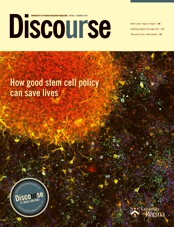Cystic Fibrosis (CF) is the most common fatal genetic disease affecting Canadian children and young adults.

The Saskatchewan Health Research Foundation provides funding through their Align Grants to researchers in Saskatchewan who are well-positioned to receive peer-reviewed funding and conduct impactful research aligned with the needs of the province.
Below are this year’s Align Grant recipients:
Cystic Fibrosis in Saskatchewan
Causing severe damage to the lungs, digestive system, and other organs in the body, Cystic Fibrosis (CF) is the most common fatal genetic disease affecting Canadian children and young adults. At present there is no cure.
Elexacaftor-Tezacaftor-Ivacaftor (Erl) is a medication that has the potential to treat up to 90 per cent of Canadians with CF. But it’s expensive – about $300,000 per year. Saskatchewan was one of the first provinces to add the drug to the Exception Drug Status, making it available for Saskatchewan children and adults.
With the approval of the drug in Saskatchewan, understanding its effects on overall health is essential. The provincial clinical monitoring as well as the majority of research focuses on the effects of Erl on pulmonary [lung] function. However, it also has impacts on multiple tissues and organs throughout the body. Yet, no studies have comprehensively assessed the overall health of people with Cystic Fibrosis using Efl over the period of a year.
Dr. Julia Totosy de Zepetnek, assistant professor in the Faculty of Kinesiology and Health Studies, aims to change that with the help of $10,000 in funding from SHR.
With a small group of people with Cystic Fibrosis who are taking Efl, Totosy will explore their lifestyle factors, cardiometabolic health, body composition, fitness, gut health, neuropsychology, and neurophysiology after starting the drug with the goal of recognizing and monitoring possible adverse side effects while also identifying potential external benefits.

Urban policy and our health
Canada is 80 per cent urbanized with four out of five people living in urban areas. A growing body of evidence shows the many ways urban design shapes our health and well-being. And it makes sense. From transportation infrastructure to industries like food, alcohol, and cannabis, to car use, cab and Uber fares, to how land is used, urban policies undoubtedly influence our health.

Despite the evidence, the uptake of health-related evidence in urban policies is limited. The City of Regina, home to 262,837 people, is auto-dependent with low-density suburbs where the majority of residents commute by car rather than walking, cycling, or taking public transport. Yet, currently there’s an unclear picture of existing health-enhancing policies and programs and decision support tools to inform urban planners in Regina. There is also limited knowledge about how urban planners perceive the link between health and urban design, the barriers to the integration of health into urban planning policies, and factors influencing the uptake of health evidence in urban planning policies.
Dr. Akram Mahani, assistant professor in the Johnson Shoyama Graduate School of Public Policy, received $10,000 from SHRF to establish a more fulsome picture. Through interviews with urban planners across at the City of Regina and policy document reviews, Mahani will help to identify what exists and what is missing – and why – to help inform health-promoting urban policies in the city.
Prenatal Indigenous women’s health
Prenatal women’s health is strongly connected to the health of their babies. However, due to the impact of colonial policies and practices, Indigenous women living in First Nations communities experience numerous barriers to prenatal care and services. There is also a gap in understanding prenatal Indigenous women’s health in Canada, especially in Saskatchewan.
Dr. Jaime Mantesso, an instructor in the Faculty of Nursing, and Dr. Stuart Skinner, adjunct professor at the University of Saskatchewan and research physician at the Wellness Wheel, created a partnership with members of the Wellness Wheel and Muskowekwan Health Services and received $9,972 from SHRF to create a community-based research project to find opportunities to better support Indigenous women’s mental well-being and holistic health during the prenatal period.
Partnering with four Touchwood Agency Tribal Council (TATC) First Nations communities – Muskowekwan First Nation, Day Star First Nation, George Gordon First Nation, and Kawacatoose First Nation – the research team will consult with expecting mothers, their families, and community supports. Through shared meals and sharing circles, the women will be able to connect with one another and to share their perspectives and experiences, allowing the research team to prioritize new paths forward to promote prenatal health in Saskatchewan First Nation communities. Findings will inform development of culturally responsive programming strategies to promote prenatal Indigenous women’s health.

Long-term care and mental illness
The number of long-term care residents who are living with mental illness is steadily increasing, yet long-term care homes are not prepared to meet the needs of this population.

In fact, in the research world, little is known about the needs of long-term care residents who are living with mental illness.
Dr. Natasha Gallant, assistant professor in the psychology department, has been awarded a $9,857 grant to find out how research can best address the needs of these residents by engaging with long-term care residents with mental illness and the ones who care for them, such as family members, nurses, and care aides. This group will work with the research team to guide the direction of the project with the ultimate goal of finalizing a top ten list of research priorities for long-term care residents living with mental illness.












